How to plant and care for a curb rose?
It is impossible to convey in words those feelings and emotions that appear at the sight of these amazing flowers. Correctly carried out planting of a curb rose and subsequent high-quality care will allow you to enjoy its delicate aroma and fragrant appearance in the garden for a long time.
Features of border roses
The curb rose is a medium and low-growing bush varieties that differ from the usual roses in height, petals, and multiple abundant flowering. Its bushes do not exceed 60 cm. They are compact, do not take up much space, and their plantings beautifully frame the plot with a picturesque border. Growing roses in the garden gives it a unique and sophisticated look.
Rose petals have a double base. The variety of colors is striking. These can be buds of one color, or combining two. There are varieties that change color during the season. So, in the "masquerade" variety, the color from bright yellow gradually turns into pink, and in the fall it becomes dark crimson.
Border roses are considered an unpretentious crop to grow, easily tolerate transplanting, quickly take root, withstand frosts.
Miniature roses are prized by designers and landscape architects. They use them to decorate streets, parks, city sites, recreation areas, "dry streams". The flowers go well with many garden plants. One of their features is that they grow beautifully both in the garden and on the windowsill in a pot.
How to plant?
Planting a curb rose is a simple process, but the gardener needs to know several important points.
- Seat selection
Landing should take place in an area protected from gusts of wind. In this case, there should be enough sunlight. A strong wind will take moisture from the crop, and its lack will affect growth and flowering. This condition is also important for potted roses. The effect of the wind is enhanced, since the roots have a limited area of soil from which they could make up for the lack of moisture.
You can not plant it on a site where other representatives of the Rosaceae family grew for a long time. The effect of "soil fatigue from roses" arises when it is greatly depleted by these plants and spores of fungal diseases, viruses and pests can be found in it.
- Soil for planting
Miniature beauties are undemanding to the composition of the soil. They grow on any soil, as long as it is not too dry, dense and waterlogged. Before planting, it is recommended to improve the soil by mixing it with drainage or organic fertilizers.
- When to plant
The best time is the beginning of spring, when the soil warms up a little. Such an early planting period makes it possible for the season to develop well, take root roots and then easily endure the winter.
Advice
While the plant takes root in a new place, it is better to cover its young bushes at night. This will protect fragile and weakened bushes from night frosts.
- How to plant
Planting is done in a hole, the size of which should slightly exceed the diameter of the planted root system. When planting, the roots are gently straightened, their neck is buried into the soil by only 3-5 cm.
The optimum distance between seedlings is 25-30 cm. After planting, the soil around the bush is carefully compacted and watered abundantly.
How should you care for a flower garden?
Caring for a curb rose will not cause difficulties even for those who are engaged in its cultivation for the first time.If the basic requirements for pruning, watering, feeding are met, the plant will thank you with good growth and lush flowering.
Watering
Miniature roses need regular, but not abundant irrigation. Drying and waterlogging of the earth must not be allowed. Watering is best done in the evening using sun warmed and settled water.
Advice
Do not allow water to enter the aerial part of the plant. It should be watered at the root!
Top dressing
Growing roses is not complete without feeding. It is necessary to feed miniature plants several times. To do this, you must use fertilizers designed specifically for Rosaceae or other ornamental flowering plants. You can use organic matter: horse manure. It mixes with the soil and fits under the bushes. There is no need to use other manure, as the roots may burn.
Spring and autumn composting works well on miniature roses. It unfolds under the bushes at the rate of 5-6 kg per m22.
When the first buds form, the plant can be fed with calcium nitrate (1 tablespoon per bucket of water). This fertilizer has its own characteristics of use:
- before feeding, the roses should be watered well so as not to burn them;
- after feeding - water again;
- the time of the procedure is in the morning or in the evening (when the heat subsides).
Additionally, every 15-20 days, you can feed it with mullein, mineral fertilizers or herbal infusions. Liming is necessary in September.
Advice
In hot, dry summers, top dressing is rare, in rainy summers - frequent and abundant. Young plants in the 1st year after planting are fed only in spring and autumn.
Leaving on hot days
Miniature roses do not tolerate rainy and very hot weather. It causes them stress. During this period, reanimation agents will help to "cheer up" the plants: "Zircon", "Epin", "Ecosil", potassium humate.
It is important to protect the culture from overheating. A rise in temperature above 25 ºC leads to overheating of the roots and deterioration of the condition of the roses. Peat and hay laid under the bushes will help to cool them a little.
Pruning
Leaving includes one more important point - competent pruning. It consists in the removal of damaged and dry shoots, in the formation of a beautiful and correct aerial part.
Advice
To prevent decay and rapid damage to cut diseases, a clean and sharp pruner should be used when cutting.
Pruning is done 5-8 mm higher from the healthy kidney. This procedure can be carried out all season. In the last pruning, extended new shoots and buds are shortened.
If the shoot is damaged, it is cut from above between 2-3 leaves. It is important to cut wild growth from grafted roses. Eliminating the "wild" above ground level will not give results - it will grow again. Correct pruning is the removal of wild shoots from the very base (from the root collar).
In order for the bushes to grow proportionally, in the 1st year of their life it is necessary to pinch off all the shoots that appear after 4 and 5 leaves, remove the buds. In "old" bushes, the central shoots growing vertically are not trimmed, only the lateral ones are slightly trimmed.
Preparing for winter
Despite the fact that many varieties of border roses can withstand frost, they must be insulated for the winter. But first, all shoots and fallen leaves are removed. The first night frosts are a signal for the start of insulation. The sequence is as follows:
- spud the plant, and the height of the embankment should not be less than 20 cm;
- put spruce or pine branches around;
- on them, gently pressing against the soil, lay the shoots;
- cover on top with dry leaves or spruce branches.
Many gardeners make a frame to insulate roses and cover it with a moisture-repellent material (roofing felt, insulating paper) folded in several layers. A plastic wrap is additionally laid on top. As soon as the thaw begins in spring, flowers can be opened.
Diseases and pests
Any plants, including the curb rose, can be attacked by insects and get sick.
Neighboring many plant species can prevent insect pests. If roses are planted next to marigolds, sage or onions, they will never have caterpillars, aphids, sawflies, spider mites.
In order to prevent and with a single lesion, rose bushes can be sprayed with infusions of onions, yarrow, garlic, calendula, and sprinkle the ground around them with ash. If the pests nevertheless appeared en masse, you should not immediately run for chemicals. Try natural, less harsh remedies first.
Dissolve laundry soap in 10 liters of hot water and add a few branches of wormwood, mix, boil for 15 minutes. After the solution has cooled down, mix everything again, strain and spray the bushes.
If after treatment the pests have not died, re-spraying can be repeated after 5-7 days.
When natural remedies fail and insects are spreading, insecticides can be used:
- against spider mites - "Sunmight";
- against aphids, caterpillars and sawfly - "Mospilan", BI-58, "Aktofit", "Aktara".
Miniature roses are highly susceptible to diseases:
- powdery mildew;
- black spot;
- rust;
- alteriosis.
It is easy to prevent their appearance. It is enough to spray the culture with solutions of copper sulfate (3%), DNOC (1-3%) or nitrophenol (2%) before covering the culture for the winter and after opening.
If an infection has occurred, then the following means are used in the treatment.
- Water-soluble sulfur (1%), Bordeaux mixture (1%) are effective against powdery mildew.
- Copper oxychloride (0.2%), Bordeaux (1%) mixture will help get rid of black spot.
- Rust can be cured with water-soluble sulfur (1%) and copper oxychloride (0.2%).
- Spraying with foundation (0.2%) or copper oxychloride (0.4%) will help cure an infectious leaf burn.
Some fungal diseases (for example, powdery mildew) appear if care and planting conditions have been violated: bushes are planted close to each other, abundant watering.
When caring for a plant, it is important to regularly examine each one, pick off “suspicious” leaves and burn them, cut off dry branches in a timely manner so that diseases or pests from one infected plant do not spread to neighboring ones.
Advice
Treatment brings a quick and effective result if it was started at an early stage of the disease, when the lesion was single.
How curb roses reproduce
Miniature beauties reproduce in 3 ways:
- cuttings;
- dividing the bush (seedlings);
- seeds.
Propagation by cuttings
It is considered the easiest way. From May to July, semi-lignified shoots can be cut off, divided into parts so that 2-3 buds remain on each of them. All leaves on them are shortened by half.
Each shoot is planted only after 3-4 hours of keeping them in a root-forming solution. The distance between them when planting is 30-35 cm. Then each shoot is watered abundantly and covered with a container (glass jar, large plastic bottle). They stay in such a "greenhouse" for about a month and a half. All this time it is necessary to water them regularly. Once the shoots have developed roots, they can be dug up and transplanted to a new location in the garden.
Propagation by seedlings
This method is applicable in autumn or spring before bud break. It is very easy to divide a mature bush. It is dug up and neatly cut into pieces. The main thing to consider is that each part must have a shoot and roots. Then all the shoots obtained by dividing are planted in the garden.
Seed propagation
Growers rarely resort to propagation of a border rose by seeds, since this is a long and troublesome process.
All harvested (purchased) seeds are germinated at +20 ° C for 2 weeks before planting. They can be sown in a container with fertile light soil in late autumn. The seeds are planted 0.5 cm deep. Throughout the winter, it is important to maintain a temperature for them from +3 to +5 ° C.In late spring or early summer, the seeds will begin to sprout.
When buying seeds, the main thing is not to make mistakes. You should pay attention to the following factors.
- Shelf life. Expired seeds may not fully germinate or not germinate at all.
- The color of the purchased variety. The selected miniature roses should be combined with the plants already growing in the garden and should match them in color.
- Longitude of flowering. It is different for all varieties: some have early, others late flowering. It will be nice if the selected variety of roses complements the overall flowering of the plants.
- Planting requirements and care. To get active growth and flowering, you need to know the basic rules for growing the purchased variety.
- Landing time. This is also important, since many species are grown indoors for some time before being planted outdoors.
Advice
It is necessary to buy seeds only in a specialized store or point of sale, so that it does not turn out that rose hips will grow instead of roses.
No need to regret the time spent growing roses in the garden. Miniature plants, in response to the care and maintenance of them, will delight everyone with their long and lush flowering.

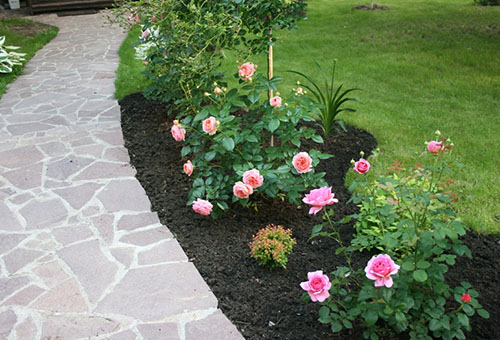

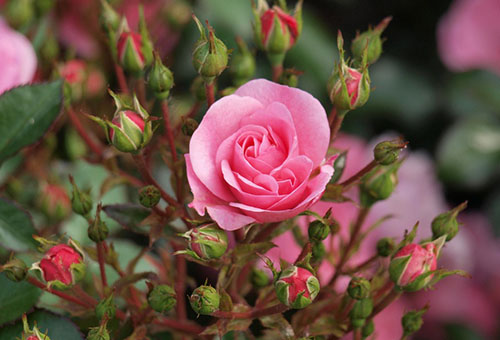
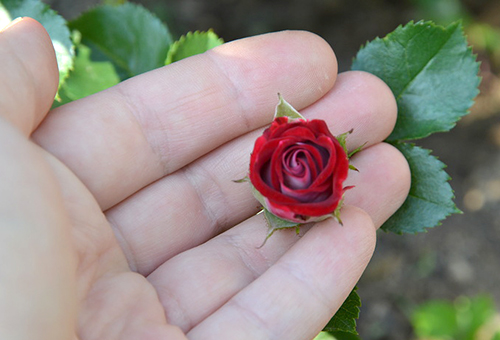
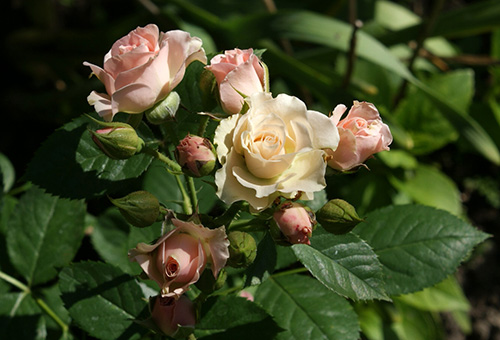
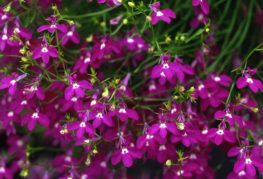


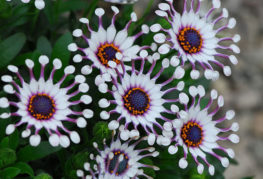

I have Cordana roses (Marika, Carmen, Mercedes) growing at home in pots and in the garden. Houses are on a glassed-in balcony, southeast. They bloom from spring to late autumn, often until the New Year. Just a raging flame behind the glass. Once a fire brigade even came to extinguish this fire (just kidding). They overwinter here on the balcony, with foliage, without any heating (mild winters, zone 7). I spray it often, with garlic and onion infusion, so that spider mites do not start. They are very fond of organic matter (highly diluted pigeon droppings). At home I keep only young roses from my cuttings, usually one or two seasons, then I plant them in the garden. Unfortunately, “in the wild” roses of Cordana are often exposed to the invasion of pests and diseases, which we constantly have to fight. Plus our merciless southern sun, from which these little sissies burn out at once, plus showers, plus hail. They look better as a group: in the garden I have a ball of hybrid tea, very luxurious and important persons, real princesses, the roses of Cordan next to them are something like a retinue of little ladies-in-waiting.
My favorite curb was stolen last year right on the night of Victory Day! One was trampled to the neck, but survived, gave an amazing flower, now a bush. I'm in love with curb roses, bought three acoustics, I'm afraid to plant.